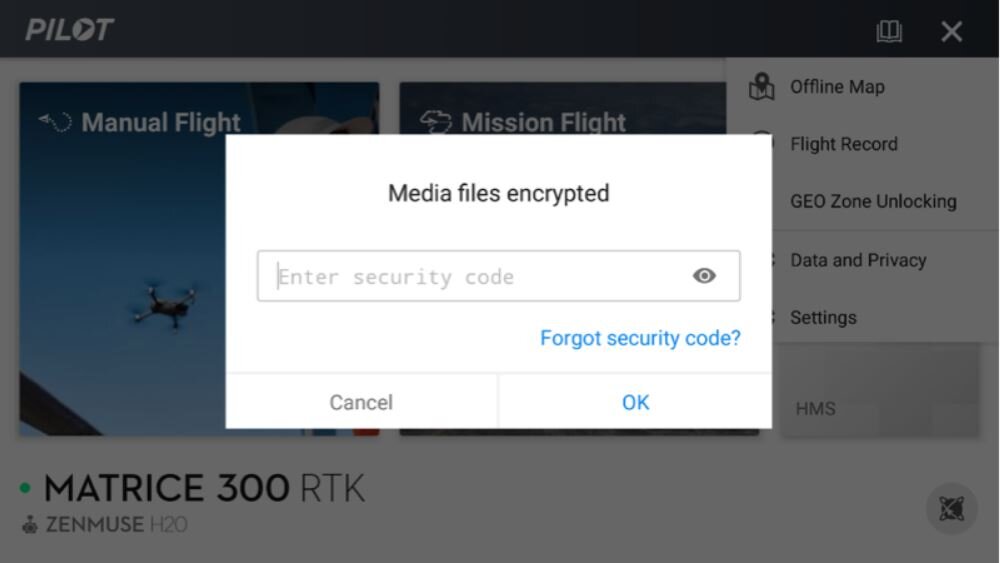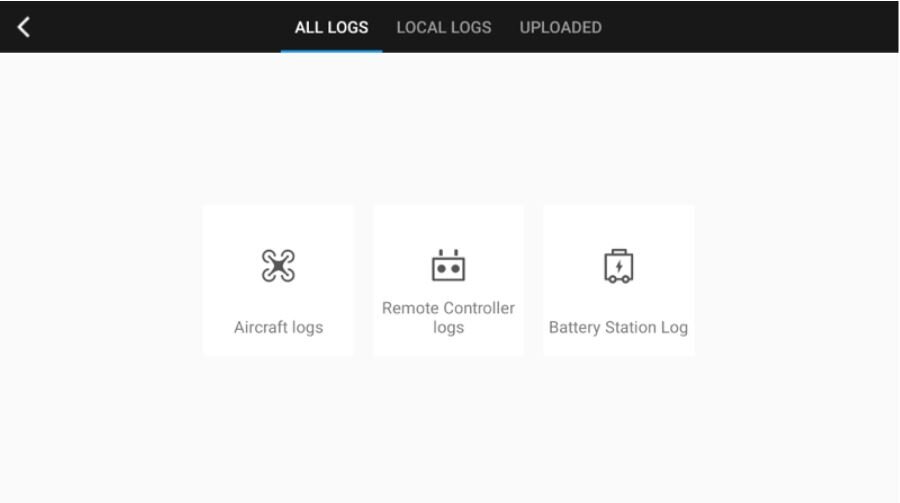DJI Announces a Major Firmware Update for M300 RTK
DJI labels the release as the v03.00.01.01 firmware update for their flagship aircraft, which introduces new improvements to data security, safety, and the aircraft’s performance.
Key features of the update include the following:
Offline updates
New data and privacy settings.
One-tap panorama mode with the Zenmuse H20 Series.
Coordinated turns.
Increased flight limits.
Quick access to DJI Maintenance Program and DJI Care Enterprise through the Health Management System.
Return-to-home (RTH) optimisations.
PinPoint optimisations.
Offline Updates
After updating to V3, future firmware updates can be completed entirely offline. Offline firmware packages can be downloaded from the DJI official website and saved to an external storage device, like an SD card or U disk. From there, insert it into your remote controller, aircraft, payload, or battery station, and use DJI Pilot to update the firmware.
First, from DJI Pilot tap 'HMS' on the right, then 'Firmware' on the left. Tap 'Offline Update' in the top right corner, and select the corresponding firmware version for your aircraft, smart controller, and/or payload, and then Update All.
For users with special security needs, this allows you to review and install updates without ever connecting to a device with live internet communication.
New Data and Privacy Settings
The V3 firmware update adds a host of improved data and privacy settings, including Restricted Network Mode, SD card encryption, the ability to delete your device data, and more.
Network Security Mode
Currently, three network security modes are supported:
Standard Mode: No restrictions on connecting to the network
Restricted Network Mode: Other than maps, RTK, live broadcast, and other applications that require an internet connection, no other network services are connected.
Local Data Mode: This is like “airplane mode” that applies only to the drone’s software. Recently, FTI Consulting validated that “when DJI’s Local Data Mode is enabled, no data that was generated by the application was sent externally to infrastructure operated by any third party, including DJI.” To learn more about Local Data Mode, click here.
Users can choose which Network Security Mode best suits their own security requirements.
SD card encryption
Users have the option to protect each microSD card with a security code as well as AES encryption. After setting up your security code, you will need to re-enter it each time you start your M300.
If you use a security code, you will need to download the DJI Decrypt Tool in order to view your encrypted files on a Windows PC.
Using the DJI Decrypt Tool
When you insert an encrypted SD card into your Windows PC, you won’t be able to access the files without the DJI Decrypt Tool. Open the tool, select the card you wish to access, and enter your password to view the files.
The computer does not need to be connected to the internet during this process, giving extra assurance to high-security users that their data is protected at all times.
Delete All Device Data
After updating to the V3 firmware version, you can delete internal logs of your activity from your drone, remote controller, and H20 Series payload. If you have hosted your flight logs on DJI servers, DJI can delete them upon request at any time by chatting with your Prisma representative.
One-tap Panorama Mode with the Zenmuse H20 Series
Now, when flying with an H20 or H20T, you can capture a full-scene panorama at the click of a button. It takes approximately one minute to produce a panorama, giving you a quick overview of the scene. This feature is especially helpful for emergency responders who need rapid situational awareness of their environment.
Introducing Coordinated Turn
This is a new feature that, when enabled, assists the pilot in making a smooth turn mid-flight. It does this by automatically adding Roll to Yaw when turning. Without Coordinated Turn, a skilled pilot must coordinate both control sticks to make sure the drone’s heading is aligned with the front of the drone, which can be demanding for newer pilots or in demanding situations.
Increased Height Limits
The maximum height limit for the M300 has been increased from 500m to 1500m, except for when within 50km of an airport.
Health Management System
An underrated, yet incredibly helpful feature of the M300 is its Health Management System (HMS).
From the DJI Pilot App, you can access error records, manage flight logs, and see the overall status of your M300. In this update, DJI has added quick access to DJI Maintenance Program and DJI Care Enterprise. You can choose to purchase this directly through DJI, or speak with your PRISMA representative to tailor a specific after-sales support package that would suit your specific needs.
Additionally, error records and log management for batteries and the battery station are available, after you connect the battery station to your remote controller via USB-C.
Return-to-Home (RTH) Optimizations
When encountering obstacles during RTH, a tip in DJI Pilot will remind users to exit Auto-RTH and manually control the aircraft to land it.
We’ve also added the ability to exit Auto-RTH by moving the remote controller control sticks in opposite directions during flight.
PinPoint Optimizations
PinPoint is possibly the most powerful feature that has gone under the radar with the M300. Thanks to the laser rangefinder built into H20 Series payloads, operators can tap on an object or feature on their remote controller screen to determine its distance from the drone, and its XYZ coordinates.
Now with the V3 firmware update, users can edit and manage multiple Pin Points, as well as set a PinPoint as a home point. Now home points can be the aircraft’s takeoff location, the aircraft’s real-time location, the pilot + remote controller’s position, and now a custom set PinPoint location.
How to update your M300 RTK to the latest firmware version
See our DJI Matrice 300 RTK packages here.









